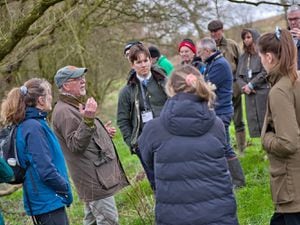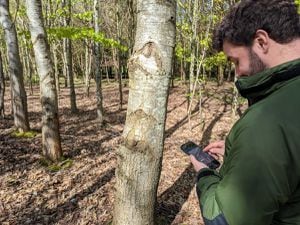Special report: What next for Ironbridge Power Station?
For nearly half a century, the belching beige towers on the banks of the River Severn have provided a dramatic backdrop to the Ironbridge Gorge.
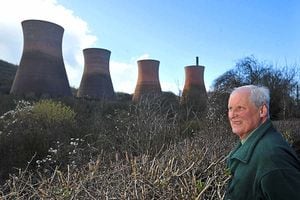
If the Iron Bridge which gave the town its name would come to define Britain's 18th century Industrial Revolution, then the colossal cooling towers of the Ironbridge 'B' power station would come to symbolise the bold new future planned for the area in the second half of the 20th century.
Now, some 46 years after Mike Smith flipped the switch that connected the Ironbridge B to the National Grid, the retired engineer returned to the site to turn the power off for the last time.
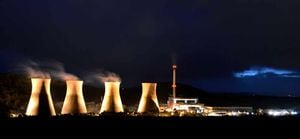

That was a week ago and a new debate has started. The chimneys have stopped smoking, and the generators have stopped smoking, what now for the site?
Decommissioning work will commence now the station has closed, with a small team of workers being retained to make the site safe. The process is due to be completed in 2017, although it is not clear what will happen to the site after that.
Mr Smith, who retired from the plant in 1992, says he hopes that at least something from the plant will be preserved for future generations.
"I would like to see it turned into a museum," says Mr Smith, who lives in Shawbury.
"I think that would be a really good idea."
He is likely to find an ally in Keith Newby, who has spent the past six years trying to get the landmark cooling towers registered as listed buildings.
The retired engineer, from Eaton upon Tern, says: "I believe the cooling towers are of architectural, civil engineering and historic interest as they represent the particular type of construction undertaken in the 20th century."
But Mr Newby believes the case for protecting the power station's towers from the wrecking ball is enhanced by the towers' setting in the Ironbridge Gorge and the area's status as the birthplace of the industrial revolution.
Certainly, it has to be said that this was a cut above the average industrial construction. While buildings of this nature are normally a clear case of function over form, the architects who worked on Ironbridge B took great care to ensure the new power station merged into its natural surroundings with minimal impact.
The towers were constructed at great expense using concrete to which a costly red pigment had been added, giving them a distinctive pinkish hue that blended in with the landscape. So successful was this piece of design, that the towers are barely visible from the bridge itself.
However, Mr Newby's previous application to have the station listed was rejected by English Heritage – now Heritage England – which ruled that the buildings were not of sufficient historical importance.
Councillor Nicola Lowery represents Ironbridge ward on Telford & Wrekin Council.

She too is sympathetic towards the idea of preserving the cooling towers as some sort of heritage centre, but warns that this could be very expensive.
"There have been many ideas for the future use of the site, such as tourist accommodation like Center Parcs as it would further support the local economy, residential development, or other commercial uses," she says.
"But due to the iconic nature of the towers and its history as a power station there is also support for the site being converted into a museum to preserve the heritage of the site and provide a well designed educational installation about the industrial revolution through to the present day to document industry in the early 21st Century.
"There's quite a lot of nostalgia associated with the cooling towers, and people have tried to see if they can preserve them, but without a commercial use that is going to be difficult. If it were possible, it is definitely something that is worthy of consideration."
Councillor Lowery stresses that it is very early days, and given the importance of the site, it is not one that should be rushed.
"I feel any proposal needs to benefit the local economy, community and wider borough," she says, adding that she was keen to work with neighbouring Shropshire Council, which actually covers the site, to come up with a plan for the general good of the area. The call for careful consideration is also shared by Joanne Boddison, general manager of the nearby Best Western Valley Hotel in Ironbridge.

While the site on the banks of the River Severn would unquestionably be of interest to housing developers, Mrs Boddison is sceptical about whether such a development would be of much benefit to the community.
"We would urge E.on to think very carefully about the future of the site before demolishing the chimneys and redeveloping the area.
"We understand there has to be change and here at the hotel we don't mind if the chimneys stay or go but what we would like to see is a well thought out plan for the site and a development which continues to bring benefits to the area.
"We therefore would not support housing on the site but would be in favour of a development which serves to further boost the local leisure and tourism industry.
"We've heard rumours of a business park and a shopping centre, both of which seem reasonable options for such a prime site."
The process could be a very long and drawn out one, if the experience of the Blackburn Meadows power station in South Yorkshire is anything to go by.
The plant, between Sheffield and Rotherham, actually closed in 1980, but it would be another 28 years before the famous cooling towers were actually demolished, due to their proximity to the M6 motorway.
Their removal using explosives was dramatic, but many people shed a tear as they came crashing down. Like the one now going on in Ironbridge, there was a vociferous campaign from people wanting to save the towers.

"They were a landmark for local people, but also millions of motorway motorists flashing by on the raised section of the M6 close to Meadowhall Shopping Centre. Known locally as the "salt and pepper pots", many suggested they could be used as an arts centre.
But could the redevelopment of Blackburn Meadows also give a hint to the future of Ironbridge? Following the demolition of the towers in 2008, E.on was given permission to build a £60 million biomass power station at the site. The plant was finally switched on last year.
It is certainly true that there are many who have questioned the wisdom of closing the power station, given the dark threats about a possible energy crisis, although equally there have been no shortage of environmental campaigners for whom the closure has not come a day too soon.
For the past three years one of the generators at Ironbridge had been converted to run on biomass wood pellets, so it would be foolish to rule out another power station being built on the site of Ironbridge.
Councillor Lowery says: "I know many have concerns surrounding the generating capacity of the UK, especially with Germany's new introduction of several coal fired power stations.
"Its location and rail links made it an excellent site for the power station but this also broadens its wider appeal as it is now considered for future uses." Roxanne Postle, of E.on, stresses that no decisions have been made yet about the future of the site, and it seems it could be some years before we finally know what the site will be used for. And there is another interesting question surrounding the future of the railway line leading to the site.
Passenger services ceased in the mid-1960s, and in recent decades the line has been mainly used to deliver coal to the power station. However, Telford Steam Railway has long expressed an ambition to take over the now disused western-most track of the former double-track railway between the power station and Lightmoor Junction, linking up with its existing stations at Lawley and Horsehay.
This is certainly something that would be supported by Councillor Lowery: "I would greatly support the introduction of a heritage rail link into Ironbridge using the existing freight line that would see visitors steaming into a World Heritage Site on a heritage steam train."
Strange week for area as traffic to towers dries up and chimneys stop puffing

It has been a strange week for the people living and working in Ironbridge.
For the first time since they care to remember, the giant cooling towers have been inactive. Traffic to and from the power station has dried up. It is a big change.
Ask people there how they feel about the power station and you will get many different answers.
But generally there is sadness at its demise.
Ironbridge is a World Heritage Site and is a place of great beauty.
But there is no great unhappiness here about the positioning of the cooling towers just around the corner. Ironbridge is the birthplace of industrialisation and to many it was highly appropriate to have the power station there. And there is plenty of affection for the iconic structures and their unique pink hue.
Standing in the shadow of the towers is the Meadow Inn.
During our visit manager Michelle Steggles was working in the restaurant with waitress Charlotte Croudace.
Michelle has only been working there for seven months but says she already feels the view from the pub would be much changed without them.
She said: "It is a shame, they have been there for so long, really they are iconic.
"Ever since I have been here people have been talking about when the power station will be closing.
"People always have an opinion on the towers. They either really love them or they really don't like them at all.
"A few people do come down and have a meal and say they have come to see the towers. We also get many locals who tell us that when they've been travelling and they see the towers they know that they are on their way home."
More than 100 jobs were lost when the power station was closed last weekend, with just a skeleton staff left to oversee it while it is being run down in the next few months. The station used to employ hundreds of workers, but that figure has reduced over the years.
The economic impact of the closure is a worry for businesses like the Meadow Inn.
Miss Croudace said: "We do have people staying here from the power station but I think anything that involves people losing jobs will have an impact on the local area.
"I don't really know what they should do with the land. Something that brings more people down here would be good.
"It will be interesting to see how they would take them down, I think if they blew them up my cleaner might resign.
"It will be really different without the cooling towers but I don't know how they would use the site if they were kept there."

Right opposite the Iron Bridge is Eley's Pork Pies on Tontine Hill. The family-run business was set up by the original Mr Eley near the first power station after he made his money working there.
Thomas Eley said: "It is sad really. We've been making pies for over 50 years and we have supplied pies to the workers for things like parties. We've had lots of orders over the years.
"At one time there were over 500 staff working there.
"A lot of people visiting do notice the power station. It is hard to know what they should do with the site now."
The station has ended its life after passing the milestone of generating power for a total of 20,000 hours since January 1, 2008.
The closure of the power station is required by the EU's Large Combustion Plant Directive but it comes despite Britain's electricity supplies set to be at their tightest levels in a decade this winter.
Originally powered by coal, the station was converted to use biomass fuel.
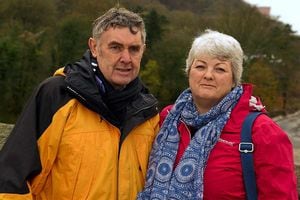
Two residents who aren't quite as sad to see the station go are Sue and Alun Morgan, both 60, who live right next to the Iron Bridge and have done so for 29 years. Mr Morgan, an education consultant, said: "We've suffered with pollution for a long time."
Mrs Morgan, who recently retired from Shropshire Council, said: "It is shame to see jobs go but I know quite a lot of people had already left because they knew that it was closing."
The pair would like to see the site turned into a wildlife area, to complement the existing woodland walks that run alongside the station or into a new attraction to encourage more visitors into the Gorge.
And they support talk of Telford Steam Railway one day extending its services into Ironbridge, taking advantage of the power station's rail link.
Mr Morgan said: "I think there was at one time talk of extending the railway back down into Ironbridge to where the old station used to be."

Sue Johnson, 61, was visiting Ironbridge from her her home in Cannock Chase. She said she thought it would be unlikely that the towers would leave the skyline any time soon.
She said: "There was a power station that has closed in Stone and that closed years ago but it is still there.
"And Rugeley power station wasn't demolished for a number of years."
Also sorry to see the closure of the power station are staff at the Ironbridge Gorge Museums Trust, which runs 10 museums throughout the Ironbridge Gorge.
They are used to visitors asking them about the history of the power station.
Richard Aldred, marketing officer for the trust, said the cooling towers were a fixture on the local landscape.
He said: "The presence of the power station on the Ironbridge landscape has long attracted a variety of opinions.
"Many of our visitors and colleagues feel that it is a wonderful reminder of the area's proud industrial past while others are surprised to see it in rural Shropshire.
"We wish everyone who has worked at the power station all the best for the future."


